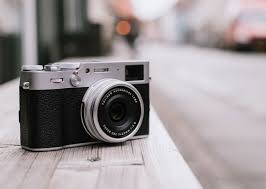
Breaking News
 The #1 Most Dangerous Fat in the World!
The #1 Most Dangerous Fat in the World!
 Is $140K the New Poverty Line? Is This the End of America's Middle Class?
Is $140K the New Poverty Line? Is This the End of America's Middle Class?
 Here Are the NEWLY RELEASED Epstein Images Tied to Powerful Democrats
Here Are the NEWLY RELEASED Epstein Images Tied to Powerful Democrats
 Joe Biden Still Struggling to Raise Money for Presidential Library – No New Donations...
Joe Biden Still Struggling to Raise Money for Presidential Library – No New Donations...
Top Tech News
 This tiny dev board is packed with features for ambitious makers
This tiny dev board is packed with features for ambitious makers
 Scientists Discover Gel to Regrow Tooth Enamel
Scientists Discover Gel to Regrow Tooth Enamel
 Vitamin C and Dandelion Root Killing Cancer Cells -- as Former CDC Director Calls for COVID-19...
Vitamin C and Dandelion Root Killing Cancer Cells -- as Former CDC Director Calls for COVID-19...
 Galactic Brain: US firm plans space-based data centers, power grid to challenge China
Galactic Brain: US firm plans space-based data centers, power grid to challenge China
 A microbial cleanup for glyphosate just earned a patent. Here's why that matters
A microbial cleanup for glyphosate just earned a patent. Here's why that matters
 Japan Breaks Internet Speed Record with 5 Million Times Faster Data Transfer
Japan Breaks Internet Speed Record with 5 Million Times Faster Data Transfer
 Advanced Propulsion Resources Part 1 of 2
Advanced Propulsion Resources Part 1 of 2
 PulsarFusion a forward-thinking UK aerospace company, is pushing the boundaries of space travel...
PulsarFusion a forward-thinking UK aerospace company, is pushing the boundaries of space travel...
 Dinky little laser box throws big-screen entertainment from inches away
Dinky little laser box throws big-screen entertainment from inches away
 'World's first' sodium-ion flashlight shines bright even at -40 ºF
'World's first' sodium-ion flashlight shines bright even at -40 ºF
I'm Back 35 gives old film cameras a second life

The first 3D-printed I'm Back 35 attachment was launched on Kickstarter in 2016, and followed by another version in 2018. Mello Medeiros turned his attention to vintage medium format film cameras in the middle of last year, but has now reworked the 35-mm format device and again launched a Kickstarter to fund production.
The digital back essentially gives photographers the choice to use their dusty old analog snappers as film cameras, or to go digital. This latest version sees the camera back wear a fresh new look, get a bigger (7.4-V/2,400-Ah) Sony battery, and gain the ability to fully control shutter speed and diaphragm aperture through manual mode. An auto mode is also available.
This edition is reckoned compatible with "99 percent of all 35-mm analog cameras available on the market," though dedicated covers allow for a better fit to specific film cameras. It benefits from a PCB that's been specifically designed for the new camera back, with a Sunplus V39 processor, Panasonic 34112 image sensor, external microphone, USB-C connectivity, and flash sync. The device can output RAW and JPEG format images to microSD card or over Wi-Fi via a dedicated mobile app.
The new I'm Back 35 is reported capable of snapping up to 14-megaxpixel images and up to 4K video at 30 fps. That said, the setup uses a focusing screen, bouncing it off of mirrors and eventually onto the sensor. As a result, you won't get the kind of crisp and detailed output you'd expect from a modern digital camera but "something between analog and digital."



